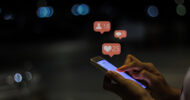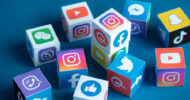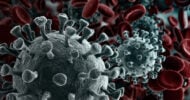Originally published in HCPLive.com
MDNG interviews Phil Baumann about the future of Twitter and social media in health care.
 Way back in January, Phil Baumann, RN, provided an empathic answer to the question/concern that was on everyone’s mind then: “Yeah, Twitter seems great and all, but can you use it for anything useful in healthcare?”
Way back in January, Phil Baumann, RN, provided an empathic answer to the question/concern that was on everyone’s mind then: “Yeah, Twitter seems great and all, but can you use it for anything useful in healthcare?”
Taking things to the extreme, Baumann, through his blog, provided 140 healthcare uses for Twitter. In his intro, Baumann wrote “Twitter’s simplicity of functional design, speed of delivery and ability to connect two or more people around the world provides a powerful means of communication, idea-sharing and collaboration. There’s potency in the ability to burst out 140 characters, including a shortened URL. Could this power have any use in healthcare? After all, for example, doctors and nurses share medical information, often as short bursts of data (lab values, conditions, orders, etc.).”
Baumann admitted that Twitter has its constraints but that the possibilities far outweigh them.
In his post, Baumann asked “What do you think health care will look like in 2099? Will we still be using paper medical records or will we be using technologies that other industries use? Will we transcend our accustomed ways of thinking and re-socialize ourselves for how we interact with each other in an exponentially changing technoscape?”
So, MDNG caught up with him to see how he’d answer these questions, how healthcare use of Twitter grew (or didn’t grow) throughout the year in his eyes, and what encouraging developments he observed since writing the post, and here’s what he had to say:
What do you think health care will look like in 2099?
I believe health care will in some respects be rather familiar to us now, but in most others it will be radically different. While the essential human elements of health care will remain the same – compassion, empathy, passion and caring – technology will be vastly more entrenched.
By then the Web will have transcended the desktop and mobile device and will have evolved into a full-blown sensory extension of ourselves. Artificial Intelligences will play dominant roles in research, diagnosis and provision of care. Meanwhile, the roles of physicians and nurses will be more focused on what people do best: being human.
Why? Because once we get through the upheaval produced by this century’s technological revolutions, we will better understand our relationship with technology than we do today. That recognition will force the people working in health care to re-examine and re-create their essential roles.
Will we still be using paper medical records or will we be using technologies that other industries use?
Of course we will! But we will be using an entirely different kind of paper. Since information will be able to be produced anywhere onto virtually anything, we won’t be relying on traditional paper nor the monitors and screens we use today. The Web will be a thoroughly integrated feature of our lives. Health data will be portable, but only after a decades-long struggle among government, providers, patients and others.
But by 2099, our interfacing with technology will be utterly different than it is today. 2009 is merely a transition point between traditional interfaces and the new ones. Traditional media took thousands of years to evolve; the new ones are evolving within years and months. It’s quite a time to live.
Will we transcend our accustomed ways of thinking and re-socialize ourselves for how we interact with each other in an exponentially changing technoscape?
Kevin Kelly has called technology the Seventh Kingdom of Life. I think that’s a fair label. And when it comes to health care information, the Web will be where data is stored, processed and retrieved. So we will have to re-socialize ourselves: we won’t have much, if any, choice. For example, our conception of Privacy will go through an evolution. Why? Because technology will force us to change.
What we call private today will be public tomorrow. Today’s concern with privacy will give way to another democratic value: Dignity. In health care, dignity is a central value: nothing is more painful to the essence of being human than violations of dignity. So one of our tasks will be to re-think why we value privacy. Newer generations will see privacy differently than we do. Dignity will emerge as a fundamental right that must be protected. Technology will almost always violate privacy – we may come to accept that. What we can’t accept, however, is violations of dignity. Dignity will be an essential aspect of how we interact with technology – not just our own, but also for the new kinds of consciousness which technology will eventually bring forth.
How did healthcare use of Twitter grew (or not grow) throughout the year, in your eyes?
2009 was a turning point for Twitter in health care. Hundreds of hospitals started tweeting in 2009. Barely none were tweeting as of the end of 2008. Suddenly after the first quarter of 2009, hospitals and other healthcare organizations took interest in Twitter. Not all have kept up, but some have evolved their strategies and use Twitter as a staple in their day-to-day communications.
If you want to see a curated lists of hospitals on Twitter, check out Ed Bennett’s Twitter List of US Hospitals Some hospitals are pretty interactive, but many others are primarily using Twitter to broadcast messages versus using it as a social medium to interact with the public and their stakeholders. I think 2009 represented a test-the-waters year for hospital adoption of Twitter. 2010 aught to be about maturing use of the service and broadening web presence well beyond just Twitter. Most hospitals still don’t even blog – which means hospitals have a while to go with respect to the Social Web.
What encouraging developments you observed since writing the post?
Since writing 140 Health Care Uses of Twitter, I’ve been very impressed with the spike in interest in using social technologies in health care. On Twitter alone, there’s a growing community of patients, doctors, nurses, healthcare marketers and others passionate about bringing about changes in health care. I was particularly impressed with the rise in Twitter chats to spur discussion, such as Health Care Social Media (#hcsm).
I also started a Twitter chat for registered nurses, RNchat. Last year, there were very few nurses using services like Twitter, but 2009 proved to be encouraging. Nurses are pivotal in health care, so I’m very proud and encouraged to see more of them partake in the needed change agency needed in the 21st Century.
In November, the FDA had its very first public hearing on social media. I don’t have high expectations from this one hearing, but I would say the fact that they held it demonstrates that attention to social media in Pharma and related industries is sorely needed. Last year, many of us early adopters felt pretty lonely in our advocacy for attention. 2009 brought us some company.
Also, I think Salesforce’s recent announcement of their Twitter-like Enterprise produce, Chatter, gives enormous credence to the power (and coming ubiquity) of micro-sharing as an important communications and collaboration medium. Eventually, I believe health care enterprises may have more confidence to bring micro-sharing into clinical and other areas of health care provision. If other big players like SAP enter this market, we could see major changes in the next few years.
I look forward to 2010. My prediction: 2010 is going to be a huge year in social media in general. We’ll start to get over the shiny-new-toy mentality and get into a more let’s-get-on-with-it approach. Healthcare will probably proceed much more cautiously than other industries, but I believe the continued and growing public discussions will help catalyze the revolution.












![Working patients and health care [PODCAST]](https://www.kevinmd.com/wp-content/uploads/Working-patients-and-health-care-190x100.jpg)

![Supporting medical resident families [PODCAST]](https://www.kevinmd.com/wp-content/uploads/Supporting-medical-resident-families-190x100.jpg)



![A tribute to primary care [PODCAST]](https://www.kevinmd.com/wp-content/uploads/A-tribute-to-primary-care-190x100.jpg)
